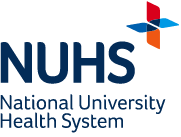Diagnosis
Before assessing a child, clinicians gather a detailed medical history, including that of the child's family. The physical examination may reveal leukaemia indicators such as swollen lymph nodes or an enlarged liver or spleen. Signs of anaemia and thrombocytopenia (low blood platelet count) are also investigated. A neurological examination, including an ocular assessment, is conducted. For boys, an examination of the genitalia is conducted to check for any swelling indicative of leukaemic infiltration.
Laboratory tests typically include a complete blood count to measure the white and red blood cells and platelets, revealing the presence of blast cells. A blood smear is examined for leukaemic blasts and abnormalities in the red blood cells and platelets.
Depending on initial findings, additional tests may include:
- Bone marrow biopsy and aspiration: To diagnose and classify leukaemia, samples are taken from the hip bone. Genetic testing on these samples helps determine different risk groups, aiding in prognosis and treatment planning.
- Lumbar puncture (spinal tap): Spinal fluid is analysed for abnormal cells to determine if leukaemia has spread to the central nervous system.
These procedures are performed by paediatric oncology specialists, with anaesthesia or sedatives administered for any painful procedures.
Treatment
Different chemotherapy drugs treat ALL, AML and chronic leukaemia. The goal is to eliminate leukaemia cells, which can also affect healthy neighbouring cells. Newer drugs, targeting cancer cells specifically, have been developed with fewer and less severe side effects.
At 9a Viva-University Children's Cancer Centre, clinical trials are conducted, including the Malaysia-Singapore ALL study and Natural Killer Cell (Expanded) Singapore trial, which based on cellular therapy. NUH performs advanced tests to tailor therapy to each child's specific needs, including modifying immune cells to target leukaemia.
In the near future, NUH aims to offer CAR-T cell therapy, which has shown promising results in treating relapsed refractory leukaemia. NUH also has a 24-hour helpline for immediate consultation and medical attention from the hospital's oncology team.
Chemotherapy
Chemotherapy is administered orally, intravenously, intramuscularly or intrathecally, tailored to each child's age, weight, risk factors and therapy response. Oncology specialists close monitor for side effects, particularly infections, as treatments can weaken the immune system. Suppression of bone marrow may lead to decreased red blood cells and platelets, causing fatigue, headaches and bleeding. Intrathecal chemotherapy and, in high-risk cases, radio therapy are used to prevent leukaemia from spreading to the central nervous system.
Haematopoietic Stem Cell Transplant
For some leukaemia types, a stem cell transplant may complement chemotherapy. This, along with radiotherapy, prepares the bone marrow for new healthy stem cells from a donor, which are then infused into the child's bloodstream.

















